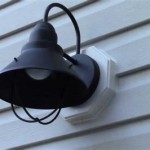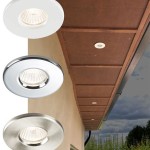Best Outdoor Solar Path Lights: A Comprehensive Guide
Outdoor solar path lights represent a cost-effective and environmentally conscious solution for illuminating walkways, gardens, driveways, and other outdoor spaces. Their independent operation, powered by solar energy, eliminates the need for wiring and reduces electricity consumption, making them an increasingly popular choice for homeowners and businesses alike. This article provides a comprehensive overview of the best outdoor solar path lights available, discussing key features, performance metrics, and factors to consider when making a purchase.
Key Factors to Consider When Choosing Solar Path Lights
Selecting the appropriate solar path lights requires careful consideration of several factors to ensure optimal performance and longevity. These factors encompass material quality, brightness, battery capacity, weather resistance, and design aesthetics.
Material Quality and Durability: The materials used in the construction of solar path lights directly impact their durability and resistance to environmental elements. Options range from plastic to metal, with each offering varying degrees of robustness. Plastic lights, typically made from ABS or polycarbonate, are lightweight and resistant to corrosion. However, they may be susceptible to damage from prolonged exposure to sunlight and extreme temperatures. Metal lights, often constructed from stainless steel, aluminum, or cast iron, offer superior durability and resistance to weathering. These options tend to be more expensive but provide a longer lifespan and better overall performance in harsh conditions. The lens material, usually plastic or glass, also plays a crucial role. Glass lenses offer superior light transmission and scratch resistance compared to plastic lenses.
Brightness and Light Output: The brightness of a solar path light is measured in lumens, which indicates the total amount of visible light emitted. The number of lumens required depends on the specific application and the desired level of illumination. For subtle pathway lighting, lights with 10-20 lumens may suffice. For more substantial illumination, such as along driveways or in areas with potential hazards, lights with 30 lumens or more are recommended. The type of LED used also affects brightness and energy efficiency. LEDs are generally categorized as standard LEDs, SMD (Surface Mount Device) LEDs, or COB (Chip on Board) LEDs. SMD and COB LEDs offer higher brightness and energy efficiency compared to standard LEDs.
Battery Capacity and Run Time: The battery capacity of a solar path light determines how long it can operate on a single charge. Battery capacity is measured in milliampere-hours (mAh). A higher mAh rating indicates a larger battery capacity and longer run time. Most solar path lights use rechargeable batteries, typically Ni-MH (Nickel-Metal Hydride) or lithium-ion. Lithium-ion batteries generally offer better performance in terms of energy density, lifespan, and operating temperature range. The actual run time also depends on factors such as the amount of sunlight received, the brightness setting, and the age of the battery.
Weather Resistance and Ingress Protection (IP) Rating: Solar path lights are exposed to various weather conditions, including rain, snow, and extreme temperatures. Therefore, it is crucial to select lights with adequate weather resistance. The Ingress Protection (IP) rating indicates the level of protection against solid objects and liquids. An IP rating of IP44 or higher is generally recommended for outdoor solar path lights, providing protection against splashing water from any direction. Models with higher IP ratings, such as IP65 or IP67, offer greater protection against dust and immersion in water.
Design and Aesthetics: Solar path lights are available in a wide range of designs and styles to complement different landscaping aesthetics. Options include traditional lantern styles, modern minimalist designs, and decorative shapes. The choice of design is subjective and depends on personal preferences and the overall theme of the outdoor space. The color of the light emitted is also a factor to consider. Warm white light (around 2700-3000K) provides a soft, inviting ambiance, while cool white light (around 4000-5000K) offers brighter, more functional illumination.
Top Solar Path Light Models and Their Features
The market offers a diverse selection of solar path lights, each with its own set of features and benefits. A comparative analysis of several popular models can aid in making an informed decision.
Model A: Premium Stainless Steel Solar Path Lights: These lights are constructed from high-quality stainless steel, ensuring exceptional durability and resistance to corrosion. They feature a high-efficiency solar panel and a long-lasting lithium-ion battery, providing up to 10 hours of illumination on a full charge. The brightness output is approximately 40 lumens, making them suitable for illuminating pathways and driveways. They have an IP65 rating, ensuring protection against dust and water ingress. The design is modern and minimalist, blending seamlessly with various landscaping styles. A key advantage is their robustness and reliable performance in diverse weather conditions.
Model B: Decorative Solar Garden Lights: These lights are designed with decorative patterns and unique shapes, adding a touch of elegance to gardens and flower beds. They are typically made from durable plastic and feature warm white LEDs, creating a soft and inviting ambiance. The brightness output is around 15-20 lumens, suitable for accent lighting. They have an IP44 rating, providing protection against splashing water. While they are not as bright as some other models, their aesthetic appeal makes them a popular choice for decorative purposes.
Model C: Motion Sensor Solar Path Lights: These lights incorporate a motion sensor, which activates the light at full brightness when motion is detected. This feature enhances security and provides added convenience. They are typically made from durable ABS plastic and feature a bright LED with a lumen output of around 60-80 lumens when activated. The light automatically dims to a lower setting when no motion is detected, conserving battery power. They have an IP65 rating, ensuring protection against dust and water ingress. These lights are ideal for areas where security is a concern or where temporary illumination is needed.
Model D: Solar Path Lights with Adjustable Height: These lights feature an adjustable height, allowing for customization of the lighting effect. They are typically made from a combination of metal and plastic and feature a bright LED with a lumen output of around 30 lumens. The adjustable height allows for directing the light beam as needed. They have an IP44 rating, providing protection against splashing water. This flexibility in height makes these lights versatile for different applications.
Model E: Integrated Solar Pathway Lighting System: Some manufacturers offer a comprehensive integrated system of solar pathway lights. These systems often feature multiple lights connected to a larger solar panel and battery pack. This design facilitates more even and consistent illumination across a larger area. In addition, they may offer features such as programmable timers and remote control operation. These systems are usually more expensive than individual lights but provide enhanced performance and control.
Optimizing Performance and Maintenance of Solar Path Lights
To ensure optimal performance and longevity of solar path lights, it is essential to follow proper installation and maintenance practices.
Placement and Sunlight Exposure: Solar path lights require direct sunlight to charge effectively. Therefore, it is crucial to place them in locations that receive at least 6-8 hours of sunlight per day. Avoid placing them under trees or in shaded areas, as this will significantly reduce their charging efficiency and run time. The angle of the solar panel can also affect charging efficiency. Some models feature adjustable solar panels that can be tilted to maximize sunlight exposure.
Cleaning and Maintenance: Regularly clean the solar panels with a soft cloth to remove dirt, dust, and debris. A build-up of dirt can reduce the panel's ability to absorb sunlight. Periodically check the battery compartment for corrosion and clean it as needed. Replace the batteries when they begin to lose their capacity or fail to hold a charge. Inspect the lights for any signs of damage, such as cracks or leaks, and repair or replace them as necessary.
Battery Replacement: The lifespan of solar path light batteries typically ranges from 1 to 3 years, depending on the type of battery and usage. When the batteries begin to lose their capacity, they will need to be replaced. When replacing the batteries, be sure to use the correct type and voltage as specified by the manufacturer. Dispose of old batteries properly, following local regulations for electronic waste disposal.
Winter Storage: In regions with harsh winters, it is advisable to store solar path lights indoors during the off-season. This will protect them from extreme temperatures and prolong their lifespan. Before storing them, fully charge the batteries and clean the lights thoroughly. Store them in a dry location.
By carefully considering these factors and following proper maintenance practices, individuals can select and maintain solar path lights that provide reliable and energy-efficient outdoor illumination for years to come.

The Best Solar Path Lights Of 2024 According To Testing Bob Vila

5 Best Outdoor Solar Lights Of 2024 Reviewed

5 Best Outdoor Solar Lights Of 2024 Reviewed

10 Best Solar Pathway Lights 2024 Landscape Path

The Best Solar Landscape Lights Of 2024 Popular Science

The 10 Best Solar Path Lights In 2024 Reviews And Guide Electronicshub

10 Best Ing Solar Pathway Lights For 2024 The Jerum Post

10 Best Solar Pathway Lights 2024 Landscape Path

Luosen Super Bright Solar Lights Outdoor Waterproof 8 Pack Up To 12 Hrs Powered Pathway Garden Auto On Off Led Landscape Lighting Decorative For Walkway Patio Yard Com

The Best Solar Landscape Lights Of 2024 Popular Science
Related Posts







